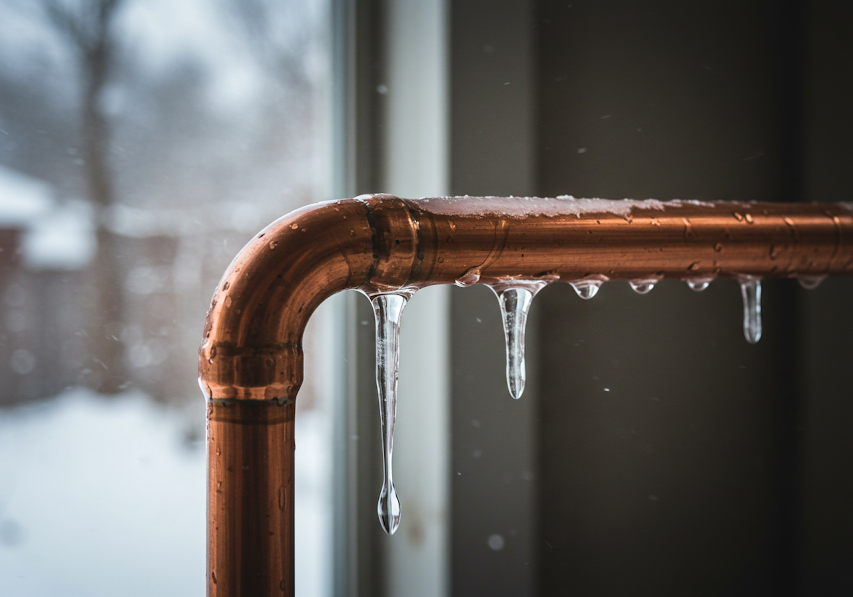.jpg)
So, your pipes are frozen. Great. Just what you needed—an impromptu winter plumbing crisis while you’re still in pajamas and trying to sip your coffee. But don’t panic just yet. You can thaw those pipes out before they turn into a burst disaster and rack up a massive emergency home repair bill. The key is speed and doing it safely.
Let’s break down exactly how to unfreeze your pipes fast—before things get really messy.
🚨 First Things First: Identify the Frozen Pipe
Not sure where the freeze happened? Check the usual suspects:
- Exterior walls and uninsulated spaces like attics, basements, and garages.
- Pipes that feel unusually cold to the touch (use your detective hands).
- Faucets that have reduced flow or none at all? That’s your red flag right there.
Found the troublemaker? Good. Now let’s get to thawing.
🔥 The Fastest (and Safest) Ways to Thaw Frozen Pipes
1. Crank the Heat Indoors
Before you even grab a hairdryer, turn up the heat in your home. It may seem simple, but ambient warmth can start loosening things up behind walls or in tight spaces.
2. Open the Faucet
Keep the faucet connected to the frozen pipe slightly open. As the ice melts, water will start to trickle out—and that movement actually helps melt the ice faster. Plus, it gives pressure somewhere to go, which can help you avoid a pipe bursting.
3. Use a Hair Dryer
Yep, your trusty blow dryer just became a DIY hero. Direct warm air along the length of the pipe, starting near the faucet and moving toward the frozen area. Slow and steady wins this thaw race.
Pro Tip: Never use open flames (no torches, no lighters, no questionable YouTube hacks). You’re thawing a pipe, not roasting marshmallows.
4. Try a Heating Pad or Warm Towels
Wrap the pipe with an electric heating pad or towels soaked in hot water. Rotate them out every 15 minutes to keep things cozy.
5. Space Heater Power
If the frozen pipe is in a larger area like under a sink or near a crawl space, place a space heater nearby (not directly on the pipe) to warm up the space safely.
💧 Don’t Forget to Check for Leaks
Once the pipe is thawed and water’s flowing again, do a careful check. Even if the pipe looks okay, a small crack could’ve formed when it froze. If you find one, cue the frozen pipe repair game plan—patch it yourself if it’s minor, or call in the pros.
🛠️ When to Wave the White Flag and Call for Help
Sometimes, despite your best efforts, the freeze is deep inside the wall or in a place you just can’t reach. If you've tried the basics and nothing's working—or worse, you spot a leak—it's officially a job for the pros. Don’t wait until that little drip becomes an indoor ice rink. Professional plumbers are equipped for frozen pipe repair, even in the trickiest spots.
And remember, the longer you wait, the higher the risk of that pipe bursting and turning into an emergency home repair nightmare.
🧊 How to Prevent Frozen Pipes in the First Place
Let’s be real. This is one winter drama you don’t need a sequel to. Try these tips to avoid a repeat performance:
- Insulate pipes in unheated areas.
- Let faucets drip during freezing temps (a little waste, a lot of prevention).
- Keep cabinet doors open to allow warm air to circulate around pipes.
- Seal drafts near water lines.
- Consider heat tape for chronically cold pipes.
Final Thoughts: You Got This
Frozen pipes are a pain, but they’re not the end of the world—as long as you act fast and smart. Keep calm, grab your tools (and your hair dryer), and get to work. And if it turns into a bigger beast than expected, don’t hesitate to call in the cavalry. After all, some emergency home repair calls are better made sooner than later.
Stay warm, stay prepared, and may your pipes always stay flowin’.